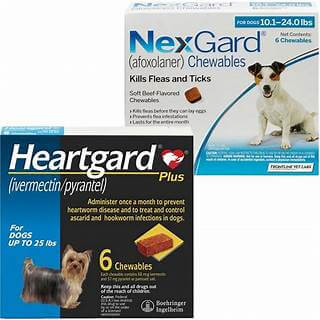As pet owners, we all want the best for our furry friends. This includes ensuring they are healthy and protected from parasites and diseases. One ingredient that has been gaining attention in the pet medicine industry is Lufenuron.
Lufenuron is an insect development inhibitor used to prevent flea infestations in dogs and cats. This ingredient is unique in that it disrupts the parasites' development rather than killing them outright.
This blog post will explore the benefits of Lufenuron as a pet medicine ingredient and why it may be a valuable addition to your pet's healthcare routine. We will also discuss the potential side effects and precautions to keep in mind when using products containing Lufenuron.
Medicine That Has The Ingredient Lufenuron
Lufenuron is an active ingredient in several pet medicine products, including:
- Program Tablets for Dogs
- Program Injectable for Cats
- Program Oral Suspension for Cats
- Sentinel Flavor Tabs for Dogs (with Milbemycin Oxime)
- Sentinel Spectrum for Dogs (with Milbemycin Oxime + Praziquantel)
It is important to note that Lufenuron is not effective as a sole treatment for fleas or other parasites. It should be used in conjunction with other flea and tick preventative measures, such as regular grooming and vacuuming. Additionally, it's always important to consult with a veterinarian before giving any medication to your pet.
How Quickly Does Lufenuron Control Fleas?
Lufenuron is an insect development inhibitor that is used to prevent flea infestations in dogs and cats. It works by disrupting the development of flea eggs and larvae, preventing them from maturing into adult fleas.
The speed of effectiveness of Lufenuron depends on the timing of administration and the severity of the infestation. When Lufenuron is given to a pet as a preventative measure, it will take several weeks for the medication to build up in the pet's system to an effective level. Once the medication reaches an effective level, it will prevent the development of flea eggs and larvae and thereby prevent adult fleas from emerging.
It is important to note that Lufenuron is not effective at killing adult fleas already present on the animal, so it cannot be used to treat an existing flea infestation. Additionally, it's always important to consult with a veterinarian before giving any medication to your pet, as they can give you specific advice based on your pet's individual health and lifestyle. They can also help you determine if Lufenuron is the right choice for your pet and advise you on any potential side effects or precautions to keep in mind.
How Is Lufenuron Given?
Lufenuron is typically given as a tablet or capsule, which is administered orally. The medication is usually given monthly as a preventative measure to control flea infestations.
The dosage of Lufenuron will vary depending on the weight of the animal and the type of product being used. Therefore, it is important to follow the instructions provided by the manufacturer or as directed by your veterinarian. In addition, some pets may require a higher dosage depending on their condition, so it is important to consult with a veterinarian before giving any medication to your pet.
Are There Any Risk Elements For This Medication?
Like any medication, Lufenuron may have potential risks and side effects. Therefore, it is important to consult with a veterinarian before giving any medication to your pet, as they can give you specific advice based on your pet's individual health and lifestyle.
Lufenuron's most common side effects are mild and include digestive upset, such as vomiting or diarrhea. These side effects are usually temporary and go away on their own. However, if your pet experiences severe or prolonged side effects, you should contact your veterinarian immediately.
Some pets may be allergic to Lufenuron, where they may experience symptoms such as hives, swelling, or difficulty breathing. If your pet shows any signs of an allergic reaction, you should seek immediate veterinary care.
It's also important to note that Lufenuron should not be used in pregnant or lactating animals or animals with known liver or kidney disease. Also, Lufenuron can be toxic to some fish species, so it should not be used in households with aquariums or pond fish.
It is always important to follow the instructions provided by the manufacturer or as directed by your veterinarian and to report any adverse reactions or side effects to your veterinarian immediately.
Is There Anything That Needs To Monitor With Lufenuron?
When using Lufenuron, monitoring your pet for any adverse reactions or side effects is important. This includes observing your pet for symptoms such as vomiting, diarrhea, hives, swelling, or difficulty breathing. If your pet shows any signs of an allergic reaction, you should seek immediate veterinary care.
It's also important to monitor your pet for the continued presence of fleas or other parasites, even if you are using Lufenuron as a preventative measure. If your pet is still experiencing flea or parasite problems, it may be necessary to re-evaluate the treatment plan and consult your veterinarian.
It's also important to follow up with your veterinarian to ensure that Lufenuron is working effectively and to report any adverse reactions or side effects to your veterinarian immediately. In addition, regular check-ups and blood tests may be recommended by your veterinarian to monitor the health of your pet while on Lufenuron.






